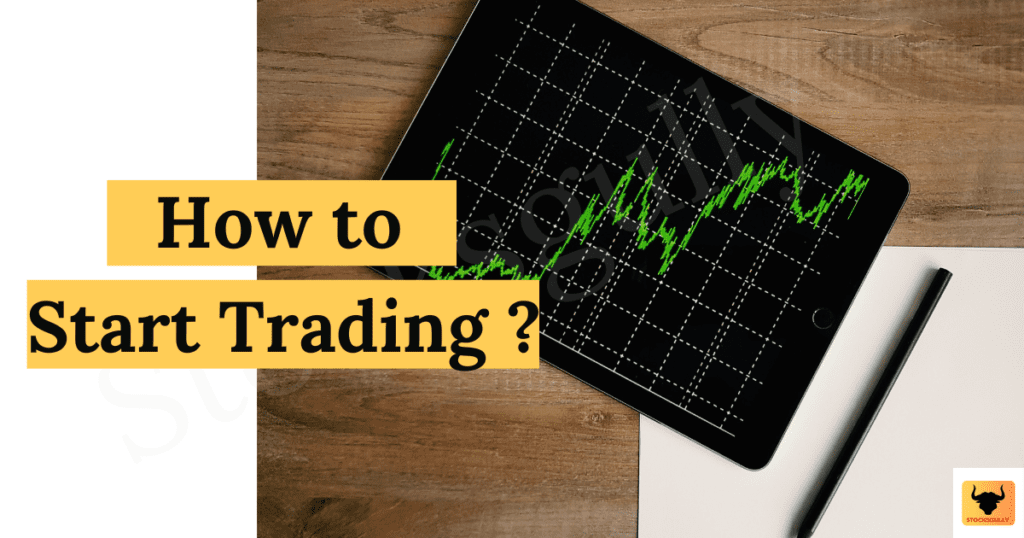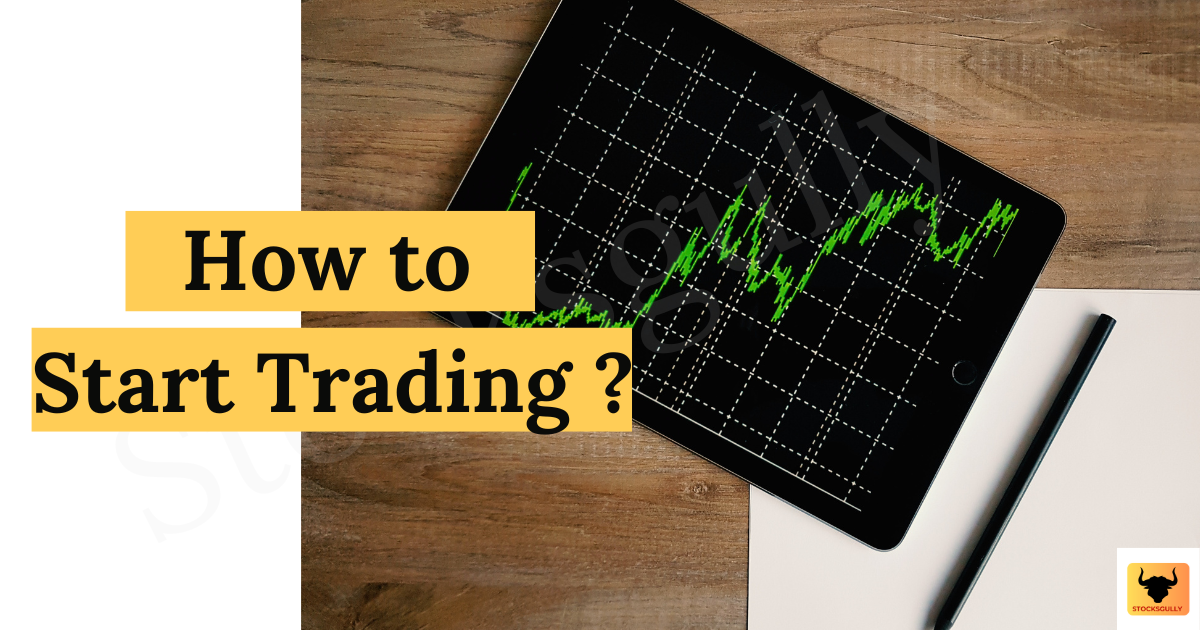
I am assuming that by now you have seen lots of YouTube videos, listened to podcasts by stock traders and you are all set to start trading or investing! But there are a lot of questions in your mind and it is easy to feel lost or confused before you start trading in stock markets.
- Should I start with delivery (cash trading) or enter directly to options trading (Most videos that you find on YouTube talk about options trading)?
- What should be my starting capital?
- Which broker should I choose?
- Which strategy should I follow?
In this post we will discuss some steps which will help you to start your trading journey.
Step 1: Start learning! It is a long journey
You should start your journey not by jumping directly into real time markets with buy and sell orders but by learning different aspects of the market to understand how it works. This means understanding about stocks, options, market terminologies, risk management (This is very important), price action and how to read and interpret charts.
These are all trading fundamentals which you should know. It will help you understand the market’s psychology and how price moves.
“You have to learn the rules of the game. And then you have to play better than anyone else.” – ― Albert Einstein
Step 2: Take time to choose your mentor
There are many mentors you can choose from. Always remember that everyone’s trading style is unique and it’s not necessary that if person “A” is making money from a particular strategy, then you will also make money from the same strategy. Some of the sources you can learn are:
- Trading and investing books: Always make notes and keep updating it . This helps very much.
- Offline courses: Choose the courses after seeing the what the mentor is teaching and whether they are genuine or not
- Online courses: Chances are that you will start learning from online courses first but back testing strategies which are told online is very important before risking your money in the stock market.
Step 3: Choose your market wisely in the beginning.
Based on the risk you are willing to take, choose your market. Whether it will be options in NIFTY / BANKNIFTY , large cap stocks , NIFTY 50 stocks etc.
Intraday trading has greater risk as compared to swing trading. Similarly, if a beginner jumps directly in options trading, it has far greater risk as compared to cash and delivery trade in stocks. While some markets might feel lucrative and have far greater potential to grow your capital but with higher potential comes higher risk.
Step 4: Feel the market first before risking your money
Even if you have risk capital and also gained some knowledge about the market, it’s always better to do paper trading first. While it is true that until and unless real money is not at stake, trading psychology will not develop but at least you will have some understanding about how price moves. It will also help you refine the concepts and test your trading strategies that you have read or learned.
Step 5: Develop a trading plan
One thing that traders should avoid is emotional trading and trading plans helps you achieve the same. A trader should do multi time frame analysis to develop a trading plan. What exactly do we mean by trading plan?
a) Your approach to trading:
- Whether you approach the market in cash trading or options trading?
- Which category of stocks will you trade (High cap, mid cap, small cap, Nifty 50 etc)?
- Will you be an option seller or option buyer?
- Will you trade in NIFTY or BANK NIFTY? etc
b) Your trading strategy
- How many trades will you take per day?
- Will you be intraday, positional trader, swing trader or scalper?
- Does your strategy give multiple entry or exit? etc
c) The risk which you will be taking in a particular trade and exact entry, exit and stop loss
- Is there any profit target you have set for the day / month etc
- What is your loss capacity for day/month when you will stop trading if you loose that amount. etc
Once you start implementing your trading plan with discipline, your trading will improve.
Step 6: Start with small amount
You should always start with a small amount because developing the trading mindset and psychology takes time and taking losses is a part of trading. So, it is always advisable that you enter with a small amount and once you start getting confidence and experience in trading, you can increase it gradually.
Stocks Gully tip:
Lot of beginner traders increase their capital to recover losses that they have incurred when they were trading with small capital. This is very dangerous because then you are at greater risk to lose the bigger capital also. If you are not profitable with smaller capital, chances are very low that you will be profitable with bigger capital
Step 7: Choose your trading style
There are different types of traders like intraday traders, swing traders or positional traders. The trading style depends on a lot of factors like your patience level, time that you can allocate for trading and much more. Let’s understand this with example
Mr A: He is working full time for a company but wants to learn and do trading. Now he has only limited time for trading, so what are the different options he has
- Intraday trading: While it can be done but then he needs to monitor prices and see charts every minute for entry and exit. It may be possible that he took the trade and then some meeting came so either he will exit or there will be higher risk in case prices move against his position when he is not monitoring prices.
- Positional / Swing: He can scan and select stocks to trade on weekends and take trade on weekdays. This will be easier for him to monitor also as he will see the closing price at the end of the day.
Mr B: He is a full-time trader but does not like to hold the trade much long. He feels worried if prices start going against his position. Now let us see what are the options he has
- Intraday: He can be a scalper or choose to work on a smaller time frame like 3 or 5 mins where he will enter and exit the trade very fast.
- Positional or swing trading: He might not choose positional trading as the holding period is long enough but he can try swing trading where the holding period is not very long and momentum trades can be taken.
Step 8: Manage risk
Defining risk in your trade before pressing buy order will help you in never risking more than you can afford to lose. So, maintaining a proper risk reward ratio is very important if you want to become a profitable trader. Your trade entry, exit, stop loss should be clearly defined before taking the trade.
Example : Suppose you have not defined risk before entering the trade , then there will be fear in your mind if prices started moving against your direction. A defined risk helps you trade without emotions
Step 9: Journal your trades
Journaling your trade is like the report card of your performance in trading. While beginner trader may find this a boring task but once you start doing it, it will tell your number of things like:
- In which time you are getting more profit or loss . Is it morning time (9:15-11 am), afternoon or 1-2 hours before the trading day ends.
- How is your trading performance month on month?
- What are the mistakes you are making every time? If there is any common mistake you are making, then you can work on that to increase your profitability.
- Are you managing the risk properly?
- Is your risk reward ratio proper and much more?
Trading is a long journey and it requires patience and discipline. Journal will help you in progressing towards the same.
Step 10: Keep patience and do not take revenge with market
It is a long journey and might take a few years also before you become profitable, so patience is very important in the entire journey. You should never do revenge trading because chances are that you will lose more and your emotional stability will get hurt.
*Revenge trading: This happens when you lose some capital in the trade. You take more trades just to win or recover your loss. Do not do that because in revenge trading mode, chances are higher that you will take unnecessary trades in the HOPE to recover money which usually results in more loss.
FAQ’s
-
How much money you need to start trading?
You should start trading in NIFTY 50 stocks first, if you are a beginner. This is because they have high liquidity. You can start with minimum of 5000 Rs in any NIFTY 50 stocks. If you are starting with options buying it can be started with 1 lot only (15000 – 20000 Rs).Do not switch the stock frequently and we advise to test your strategy for at least 100-200 trades in 1 stock only to get confidence.
-
How a beginner should start trading?
As a beginner trader, you should consider these 10 steps to start:
- Start learning! It is a long journey
- Choose your mentor
- Choose your market wisely in the beginning.
- Feel the market first before risking your money
- Develop a trading plan
- Start with small amount
- Choose your trading style
- Manage risk
- Journal your trades
- Keep patience and do not take revenge with market
-
Is it hard to start trading?
Everything is hard when you are start something new and trading is not different. Your purpose to start trading should be clear in your mind because it will take time and require continuous improvement. If you are entering into stock market just to get rich quickly, then chances are high that you will lose.
It is a great career and skill but rather than chasing the ROI, choose the right process to get success.
-
Can I learn trading in 1 year?
It depends on person to person but still you need minimum 1 year considering you are giving sometime to trade and learn from the mistakes.
There should be a continuous progress in your journey. There are different ways to track this like:
- Is your loss decreasing month on month?
- Are you repeating your mistakes or leaning from it?
- Is your win rate increasing in market ?
I hope this article helps you .
Happy trading and investing !

